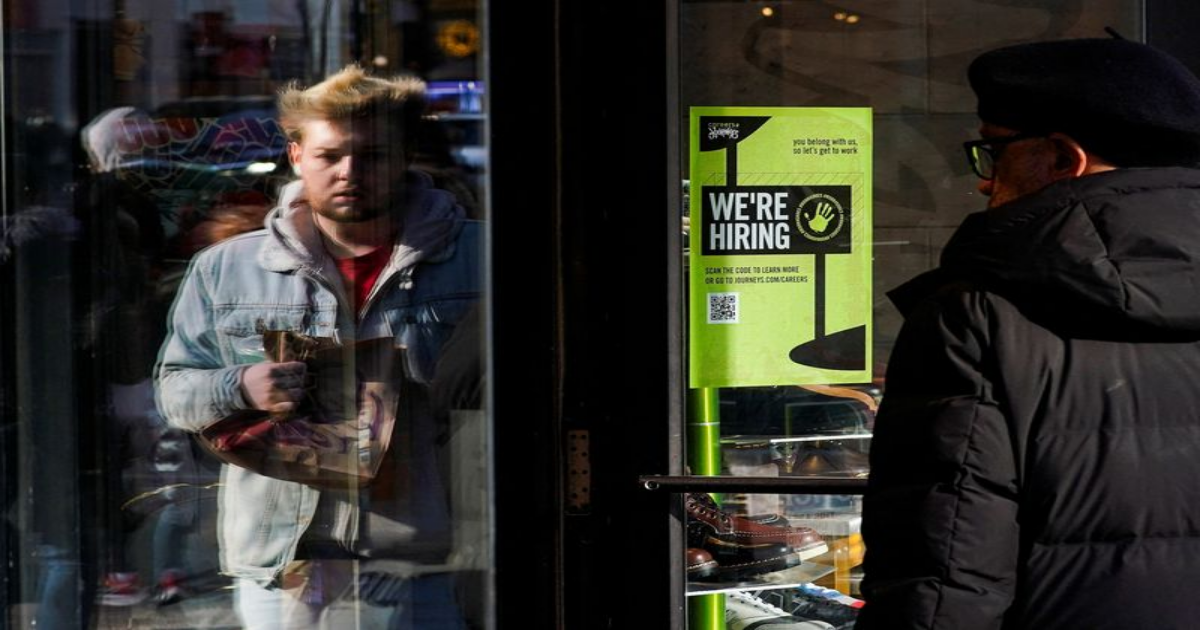WASHINGTON (Reuters) -U.S. private payrolls increased more than expected in March, but that did not change economists’ views that the labor market was slowing against the backdrop of mounting economic uncertainty due to tariffs.
Private payrolls increased by 155,000 jobs last month after an upwardly revised 84,000 rise in February, the ADP National Employment Report showed on Wednesday. Economists polled by Reuters had forecast private employment advancing 115,000 following a previously reported 77,000 gain in February.
The increase in payrolls was across all industries, with the goods-producing sector adding 24,000 positions and employment in the service-providing industry rising 132,000.
Labor indicators from small businesses, regional Federal Reserve banks, business and consumer sentiment surveys have been consistent with easing labor market conditions.
Economists warn that President Donald Trump’s blizzard of tariff announcements since returning to the White House in January could significantly erode demand for labor.
“We would expect the broad rise in uncertainty about the economy is not only restraining firms from taking on new employees, but it is also restraining firms from laying off workers,” said Carl Weinberg, chief economist at High Frequency Economics. “It costs money to fire people, and more money if you have to hire them back because things are not as bad as they were thought to be.”The ADP report, jointly developed with the Stanford Digital Economy Lab, was published ahead of Friday’s more comprehensive and closely watched employment report for March from the Labor Department’s Bureau of Labor Statistics. There is no correlation between the ADP and BLS employment report.
Trump promised to announce global reciprocal tariffs on Wednesday, which he has dubbed “Liberation Day.” He sees tariffs as a tool to raise revenue to offset his promised tax cuts and to revive a long-declining U.S. industrial base.
But businesses and households are not convinced. Business and consumer confidence have sagged, which could see a retrenchment in investment and consumer spending. Pressure is also seen coming from deep government spending cuts, which have so far resulted in thousands of federal workers being fired.
Economists now see higher odds of a recession over the next 12 months than they did in February.
Government data on Tuesday showed job openings declined and hiring was tepid in February. There were 1.07 job openings for every unemployed person, down from 1.13 in January.
“As usual, we recommend that you disregard ADP’s forecast for private payrolls, given its poor track record in recent years,” said Oliver Allen, senior U.S. economist at Pantheon Macroeconomics. “ADP’s sector-level forecasts are equally unreliable. In short, ADP adds no value.”
Private payrolls likely increased by 127,000 jobs in March after rising 140,000 in February, a Reuters survey showed.
With more public sector job losses expected, nonfarm payrolls are estimated to have increased by 135,000 jobs after advancing 151,000 in February.
Economists are expecting federal payrolls to decline by at least 15,000 in March after dropping 10,000 in February.
The unemployment rate is forecast unchanged at 4.1%.
(Reporting by Lucia Mutikani; Editing by Chizu Nomiyama and Andrea Ricci)
